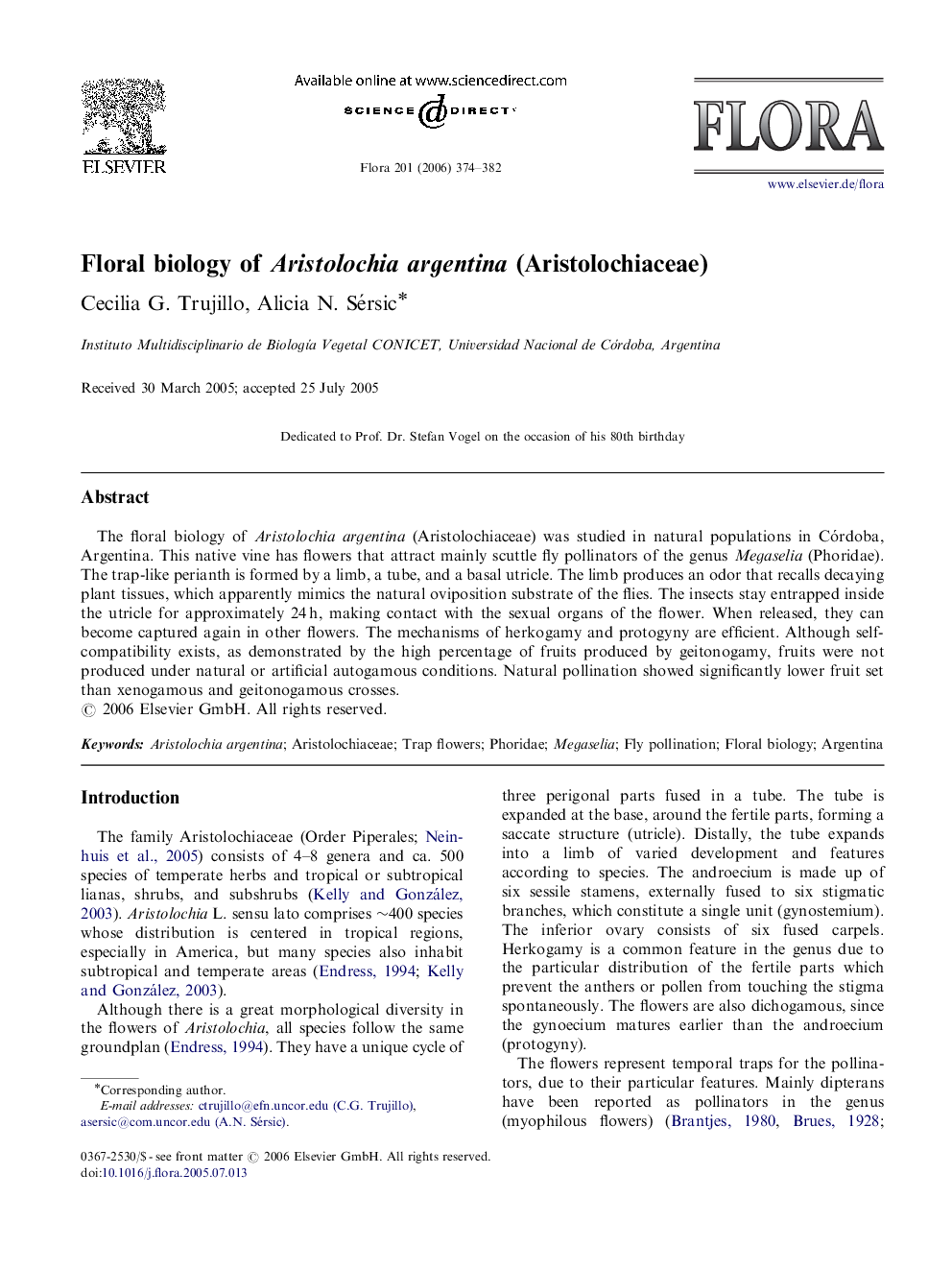| Article ID | Journal | Published Year | Pages | File Type |
|---|---|---|---|---|
| 2180279 | Flora - Morphology, Distribution, Functional Ecology of Plants | 2006 | 9 Pages |
The floral biology of Aristolochia argentina (Aristolochiaceae) was studied in natural populations in Córdoba, Argentina. This native vine has flowers that attract mainly scuttle fly pollinators of the genus Megaselia (Phoridae). The trap-like perianth is formed by a limb, a tube, and a basal utricle. The limb produces an odor that recalls decaying plant tissues, which apparently mimics the natural oviposition substrate of the flies. The insects stay entrapped inside the utricle for approximately 24 h, making contact with the sexual organs of the flower. When released, they can become captured again in other flowers. The mechanisms of herkogamy and protogyny are efficient. Although self-compatibility exists, as demonstrated by the high percentage of fruits produced by geitonogamy, fruits were not produced under natural or artificial autogamous conditions. Natural pollination showed significantly lower fruit set than xenogamous and geitonogamous crosses.
